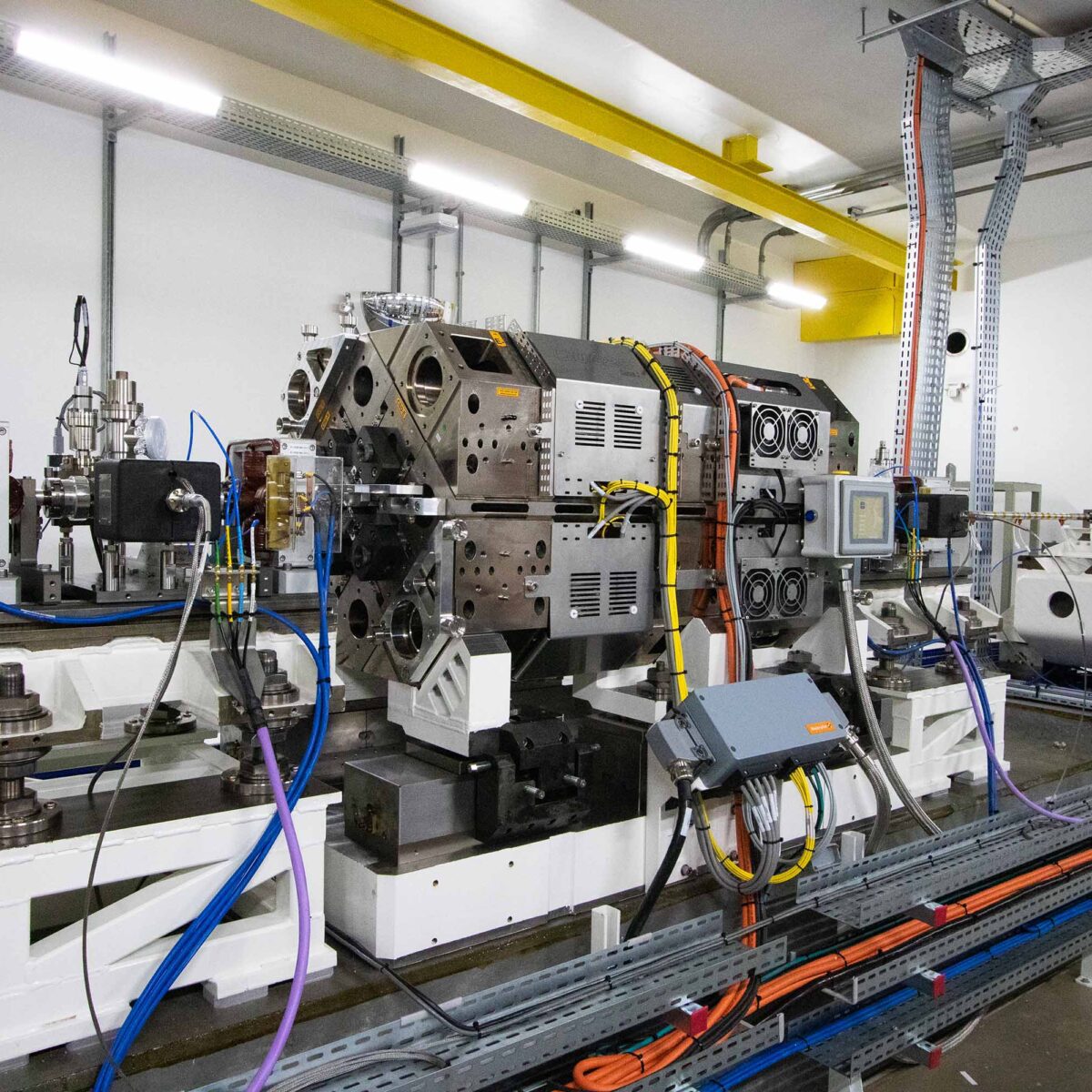
Delta undulator after installation on the storage ring
Component is the first of its type to be installed in the storage ring of a synchrotron light source
This November, group members in the Technology Division at CNPEM were involved in the process of replacing the undulator on the Sabiá beamline, which operates in the soft X-ray range and is dedicated to X-ray absorption techniques, particularly linear or circular dichroism of magnetic materials (XLD, XMLD, XMCD) and photoemission electron microscopy (PEEM).
Undulators are devices that cause oscillations in the trajectory of the electron beam in a synchrotron light source. These oscillations are produced by magnetic fields generated by a series of alternating magnetic poles. Synchrotron light is emitted for every oscillation in the trajectory; the properties of this light are defined by the geometry of these components, which can be arranged in various different ways.
The new component installed in the Sabiá beamline is a delta-type undulator and is 1.2 meters long. It contains roughly 380 magnet blocks which combine to produce a peak magnetic field intensity of 1.25 T in linear polarization mode and 0.88 T in circular polarization mode.
“This is the first delta-type undulator to be installed in the storage ring of a synchrotron light source, and it was built entirely here at CNPEM. It is made up of four lines of magnet blocks that can be moved around to adjust the properties of the synchrotron light generated, in terms of polarization as well as energy,” notes Vitor Soares, a physicist in CNPEM’s Magnetic Systems group.
Because the undulator has a transversal section with restricted dimensions, a new section of the vacuum chamber dedicated to this application was required. Various groups in the Technology Division participated in the processes that were involved, machining, welding, impermeability testing, cleaning, and depositing NEG film so the old straight section could be removed and the new section installed to receive the new undulator.
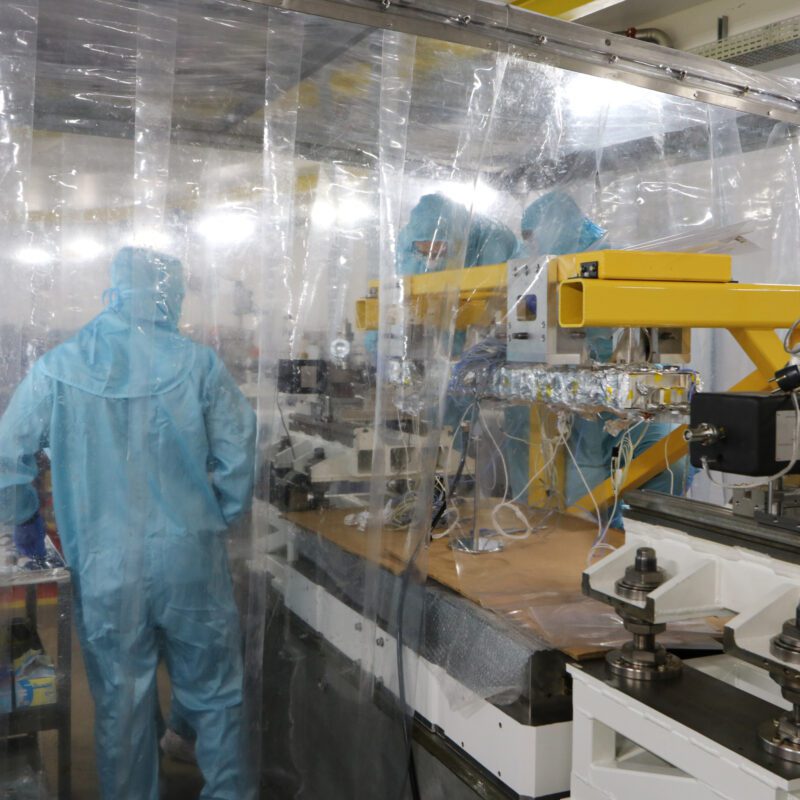
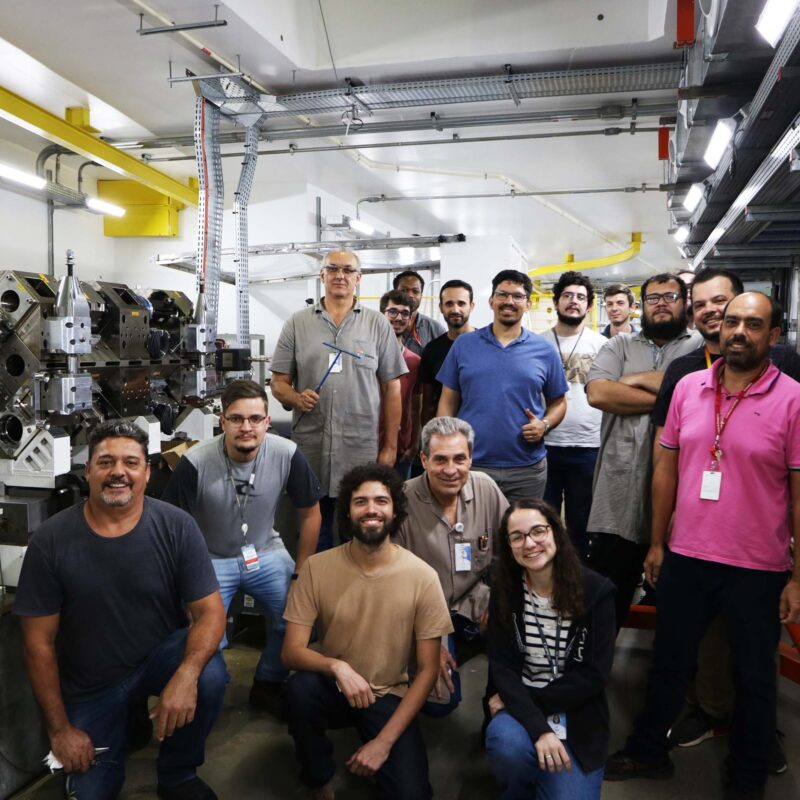
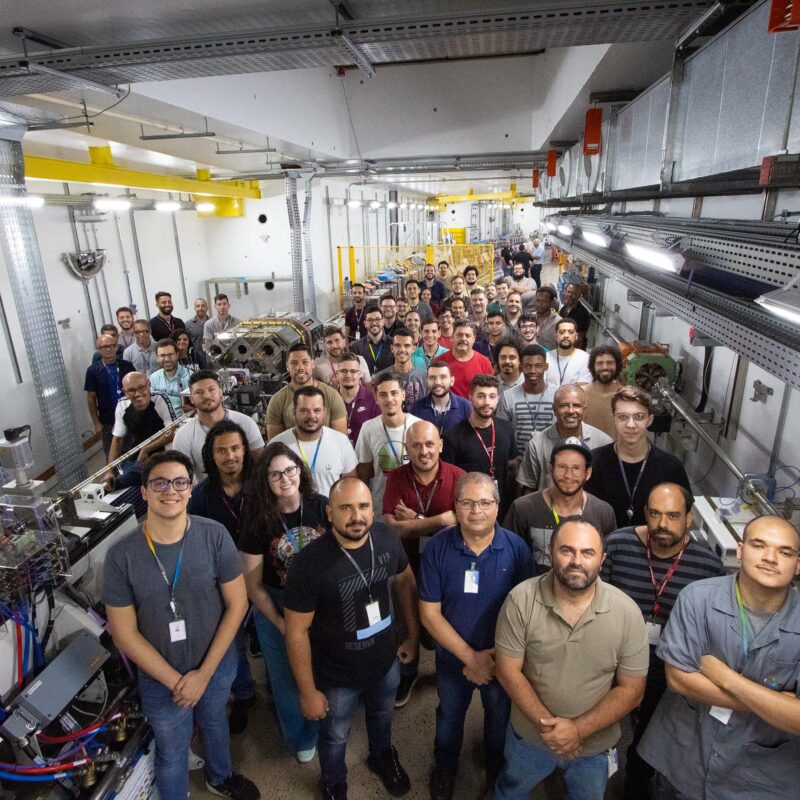
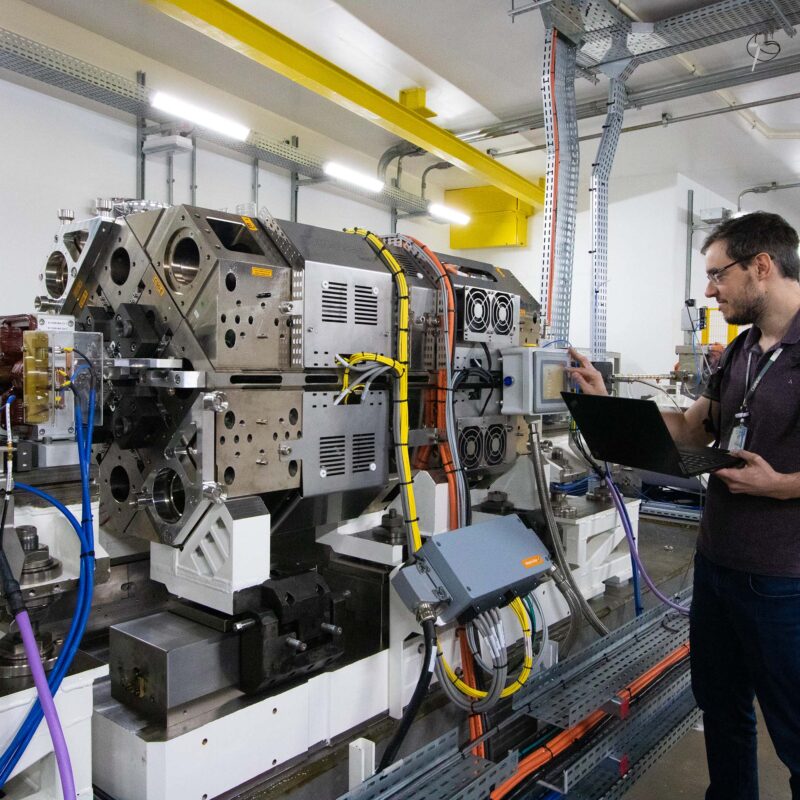
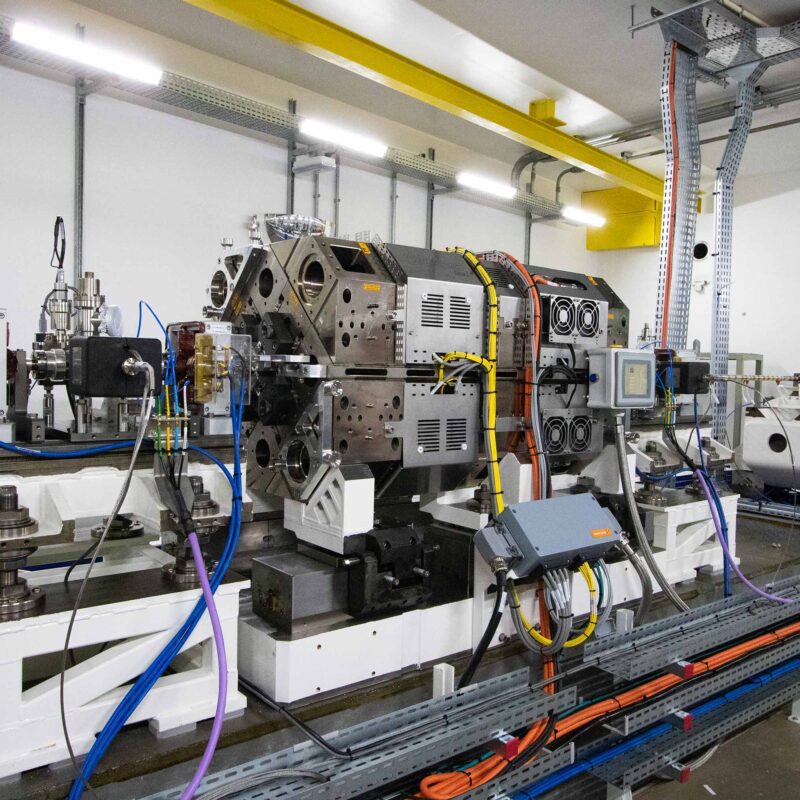
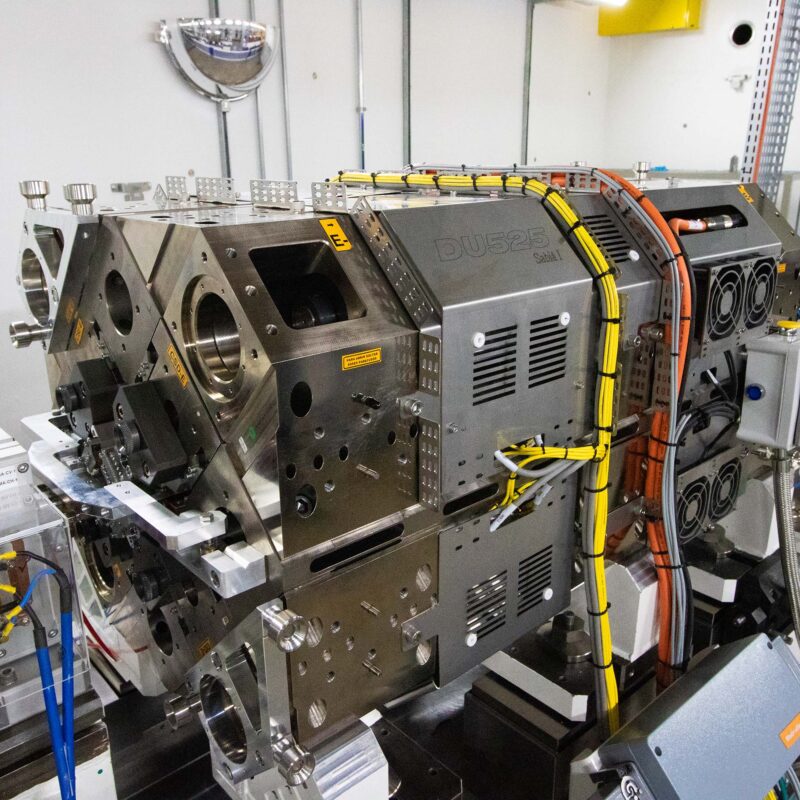
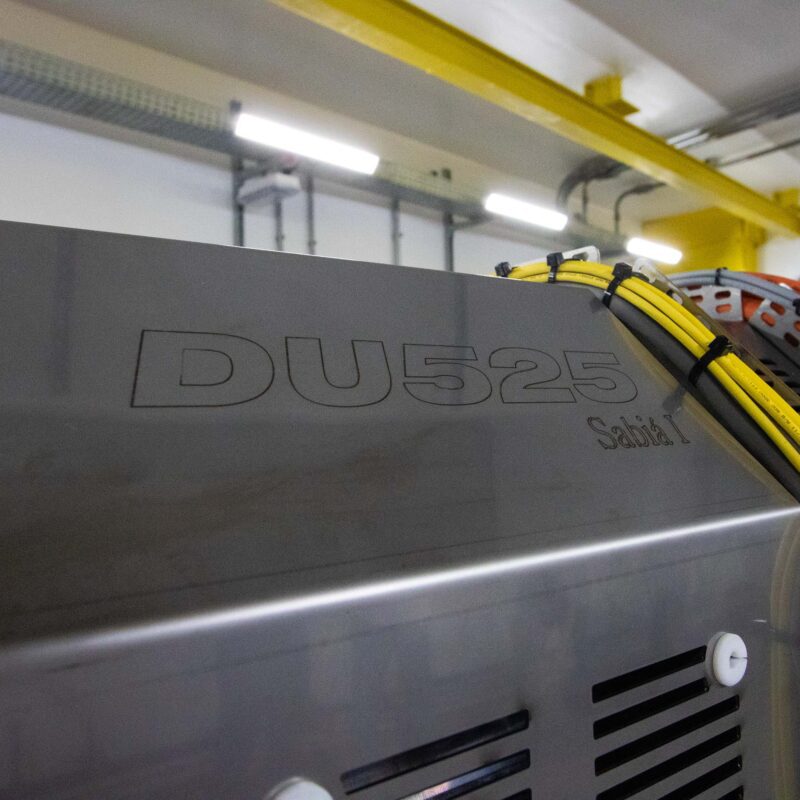
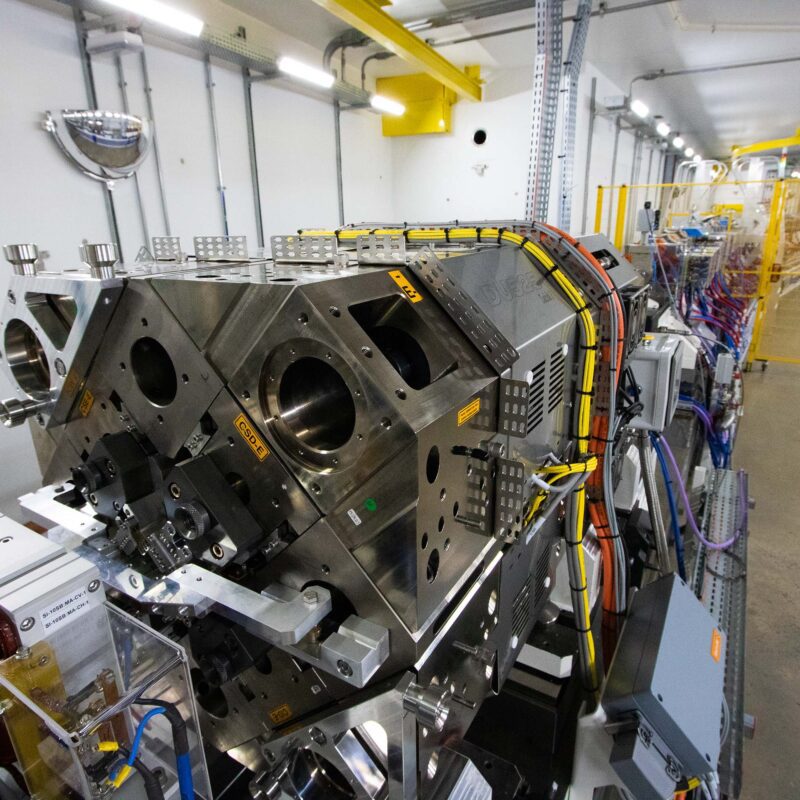
The provisional undulator which was removed from the storage ring was inherited from UVX’s PGM line and was an APPLE II (Advanced Planar Polarized Light Emitting)-type device. “The component that had previously been installed on the Sabiá beamline was not able to reach lower energy levels, which are essential for analyzing many materials with magnetic properties such as iron, manganese, and carbon. Even so, it was very important for the process of commissioning the beamline, and significantly advanced work while the new undulator was being fabricated,” adds Julio Criginski, CNPEM researcher and coordinator of the Sabiá line.
The geometry of delta undulators requires the magnets to be very close to the vacuum chamber, which limits their use to only machines with ultra-low emittance, which is the case for fourth-generation synchrotron light sources.
And like other insertion devices installed at Sirius, the new undulator cannot cause unwanted disturbances in the stored electron beam. “In a synchrotron light source, the electron beam travels many times around the storage ring. For this reason, it is very important that the magnetic field effect produced by the undulator be as controlled as possible, with the beam entering and exiting at the same angle so it can be transparent for the rest of the machine,” explains Soares.
The symmetry of a delta undulator also grants it the significant advantage of reaching the same energy interval for horizontal and vertical linear polarization, something that APPLE II type undulators are not capable of. “Additionally, these components also cover a broader energy interval for circular polarization, which is a great help in the scientific research done on the Sabiá beamline,” adds Criginski.
The movements of the magnet block cassettes in the delta undulator developed by CNPEM are precise to 1 μm, a very significant milestone for this type of equipment. “We are talking about forces of attraction or repulsion between the magnets that reach 30 kN. Maintaining this level of precision when working with all this is an enormous challenge,” emphasizes Soares.
The coming weeks will be dedicated to the process of technical commissioning of this component. Tests will be run by members of the Accelerator Physics Division at LNLS so the undulator can be integrated into the operating routine at Sirius without impairing the stability of the electron beam. After this period, the Sabiá group will dedicate itself to scientific commissioning of the undulator, working on studies that will assist in the fine-tuning necessary so that outside researchers can take advantage of these new improvements.
A joint effort, involving local and external researchers, validated crystallographic study of small molecules, alongside the usual with proteins
100 new projects will be carried out in the six research stations already open to users in Brazil's largest scientific infrastructure